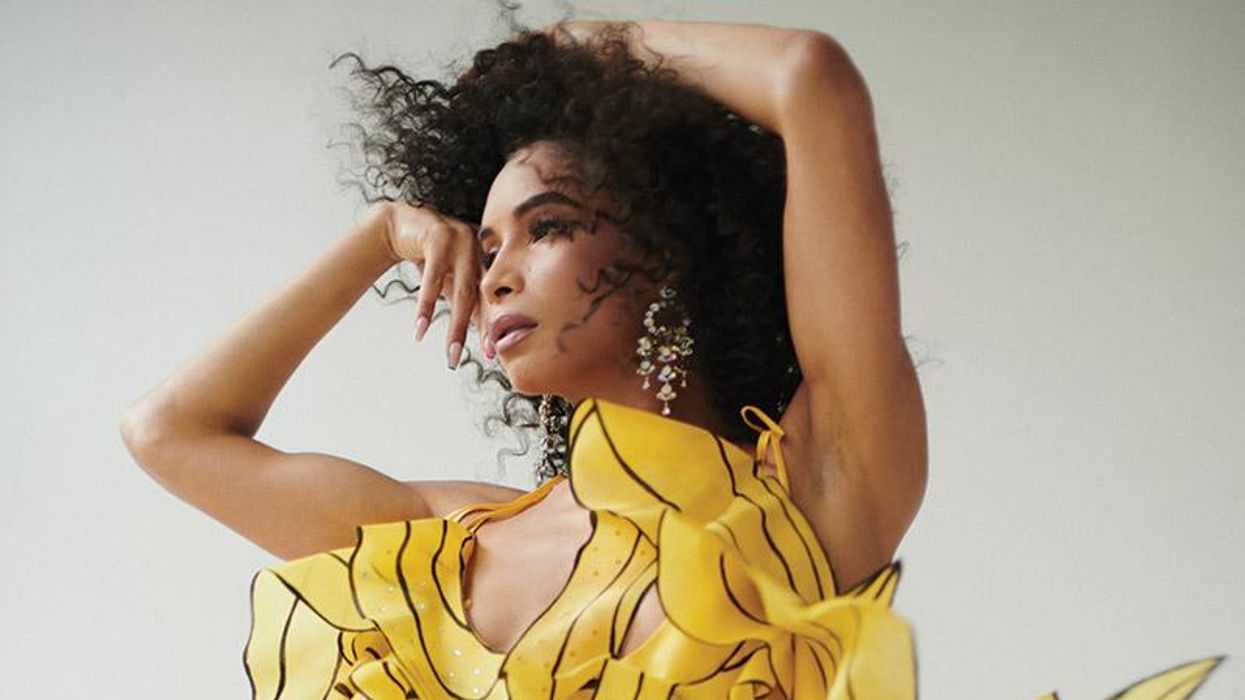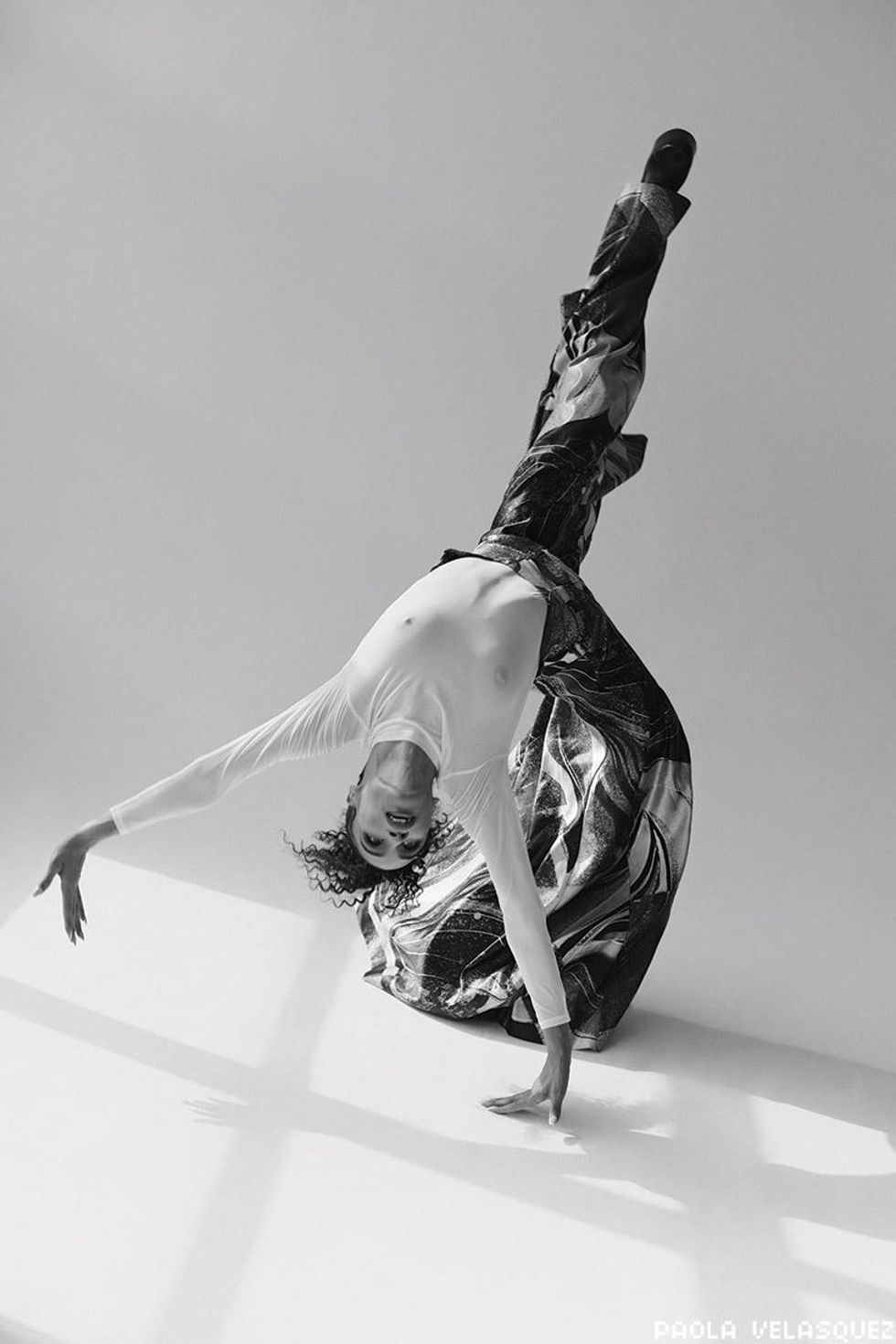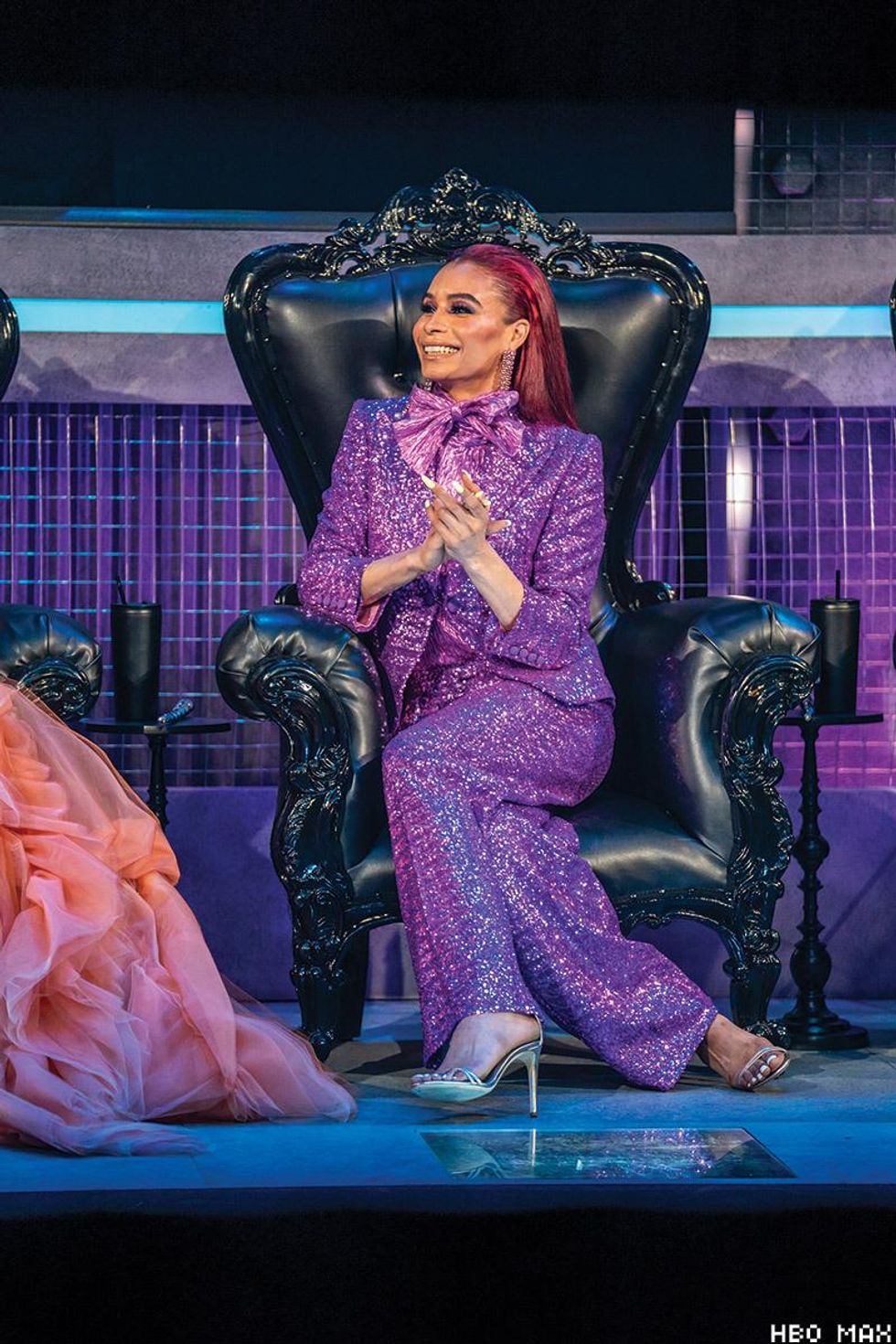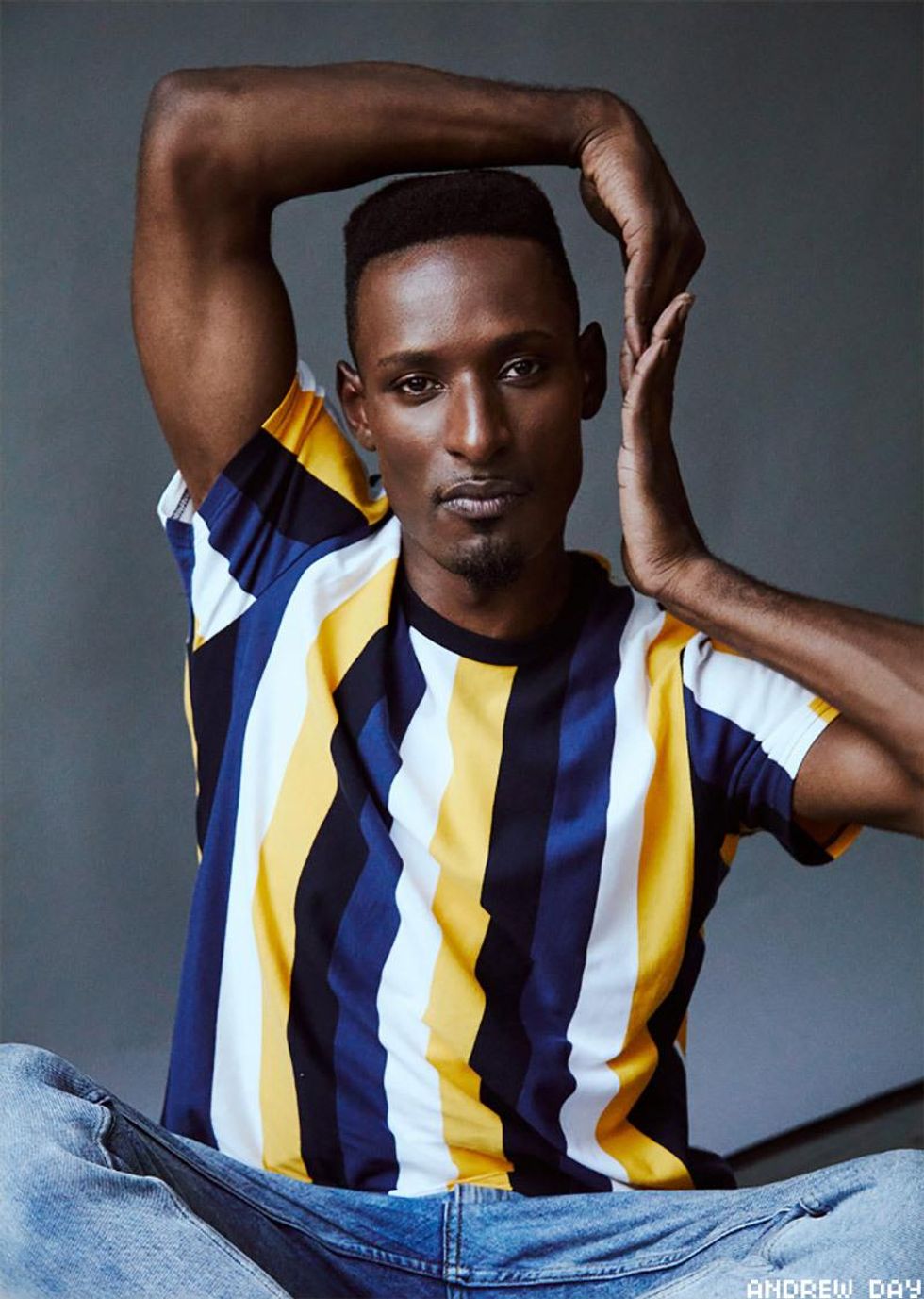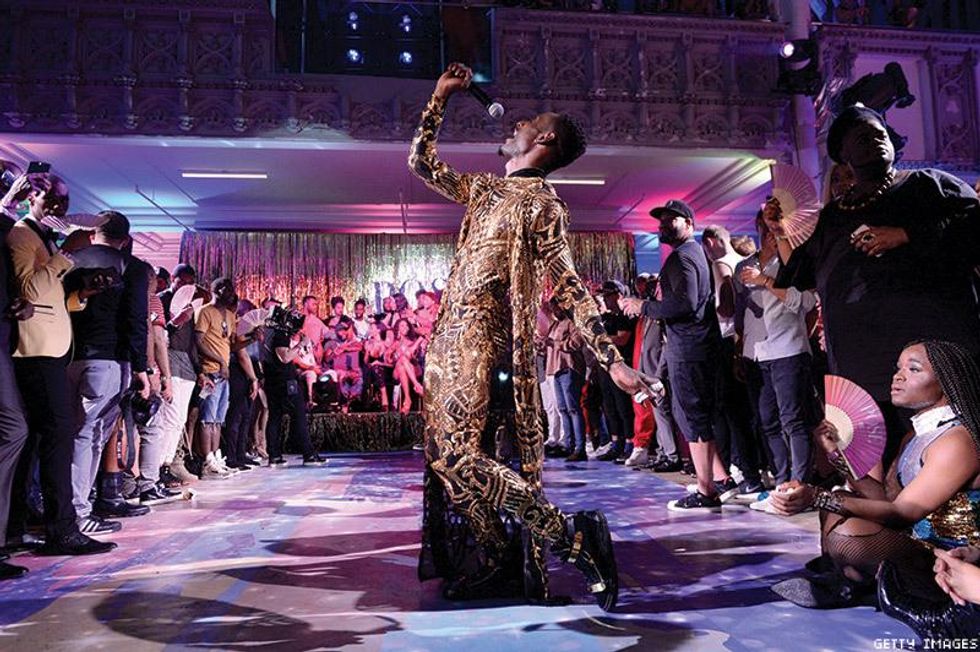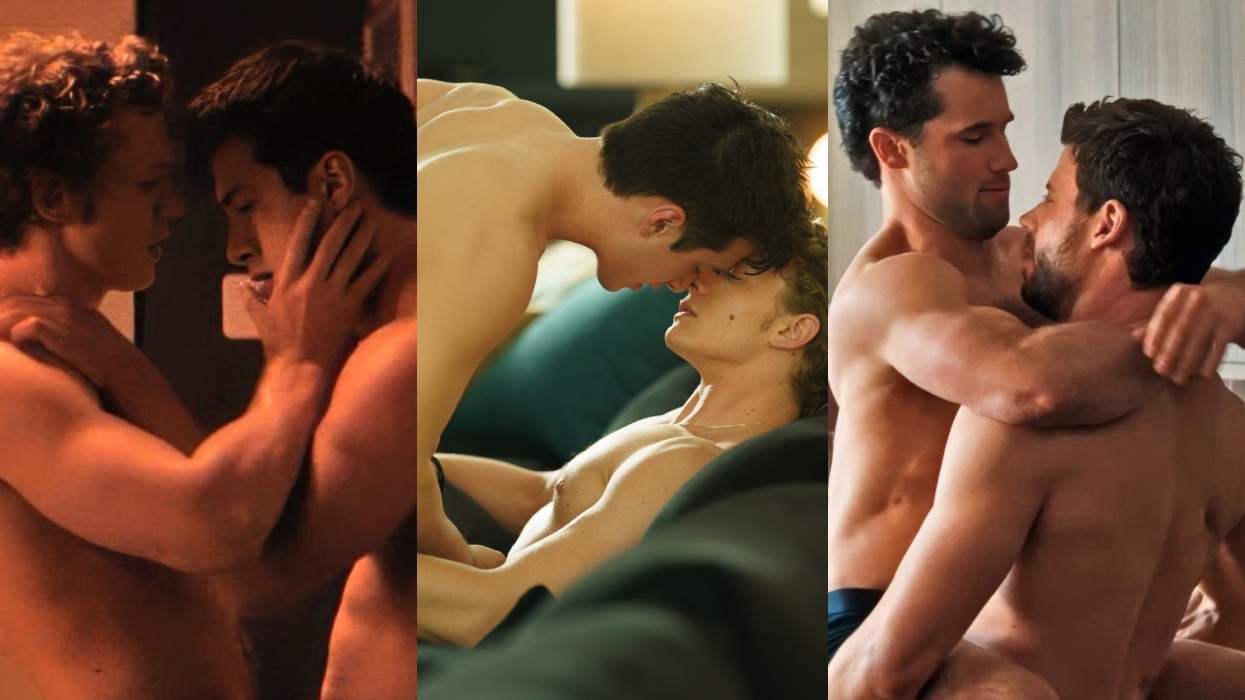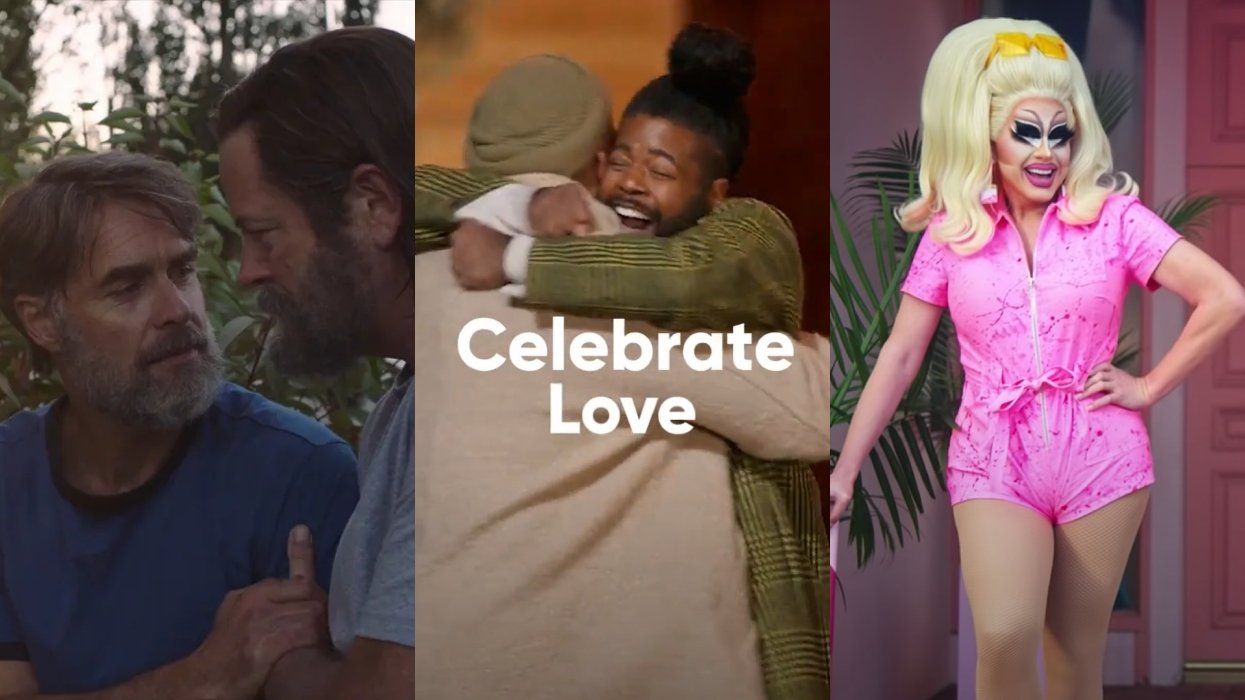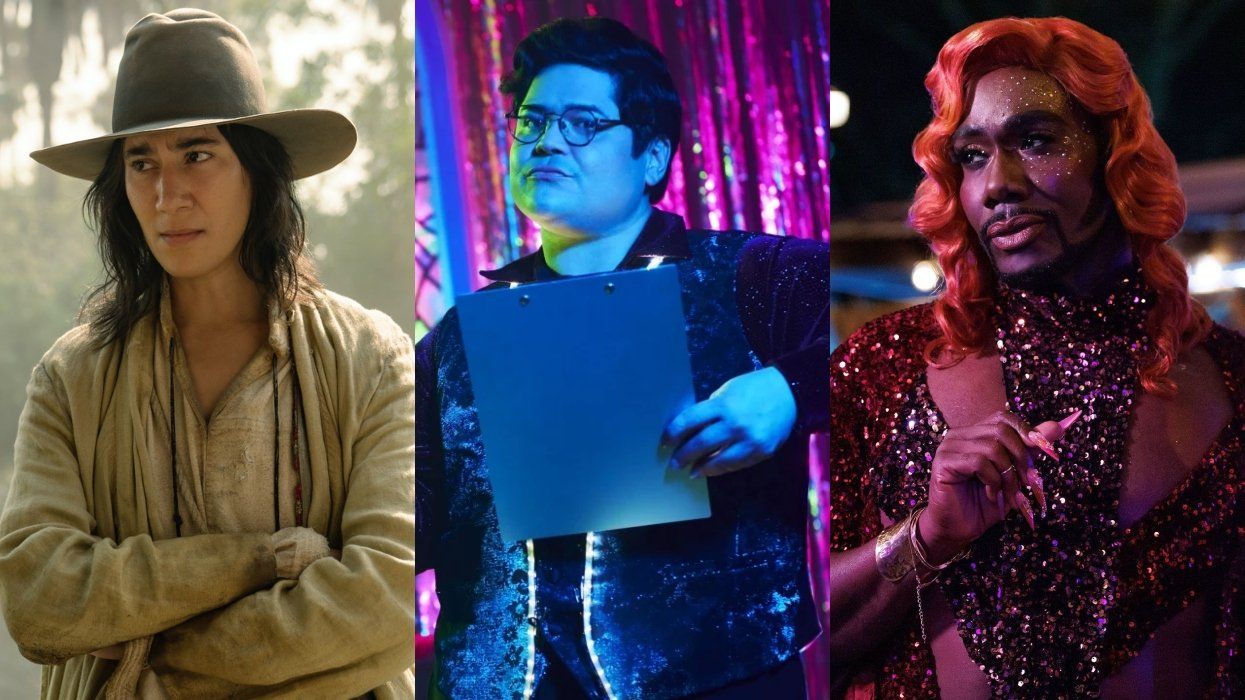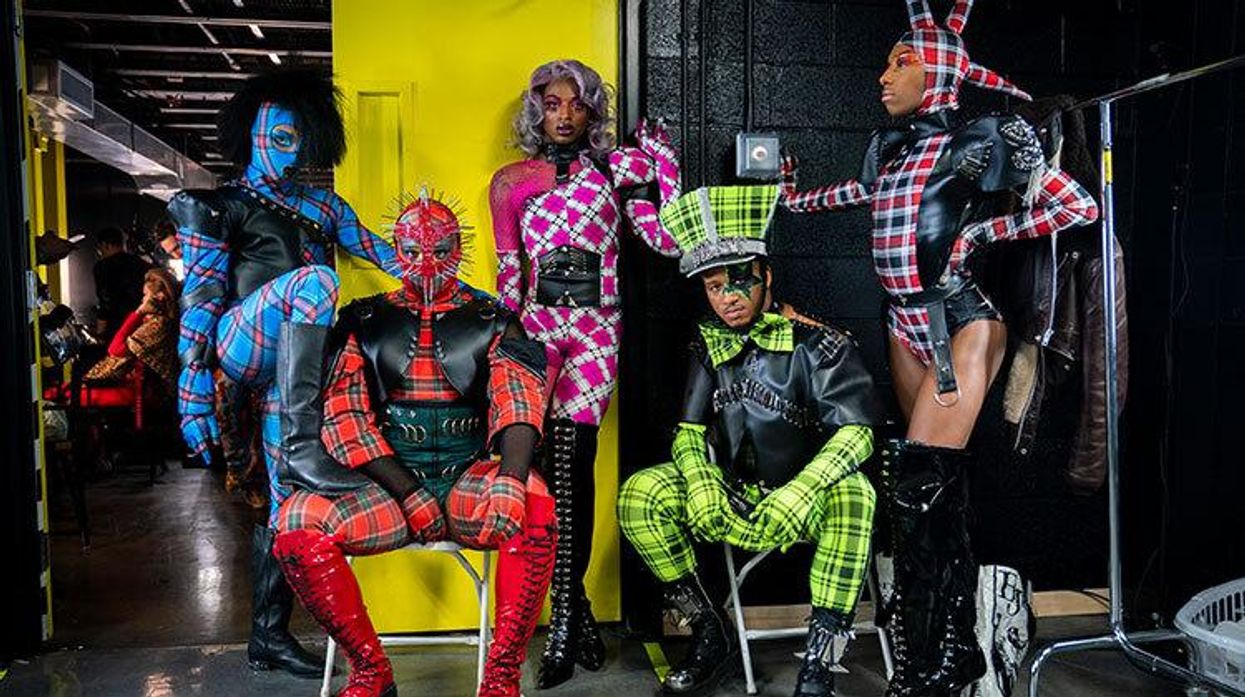Leiomy Maldonado is known as the "Wonder Woman of Vogue" for a reason. A title bestowed upon her by Icon Gorgeous Jack Gucci, one of ballroom's most influential figures and a bit of a name maker, it refers to her innovation on the floor -- most notably, her 360-degree, gravity defying spin into the air before landing on her back with a leg extended, or in a "dip." But this summer, with her competition days largely behind her, Maldonado, along with fellow icon and "King of Vogue" Dashaun Wesley has been helping to usher in some of the scene's newest talents via the debut season of HBO Max's Legendary.
The new show, which premiered on the streaming service in May, features eight houses competing head-to-head in a smattering of categories where the winner will be given a historic $100,000 prize. Contestants are required to show face, to pump down the runway, and turn out more than a few awe-inspiring looks. And they are expected to vogue, many of them borrowing from the vogue fem dramatics, sometimes "wild child" style, that both Maldonado and Wesley have helped to popularize over the last decade as two of ballroom's biggest performers who made their names being unapologetically themselves.
"I always tell people that I am a part of the Unapologetic Era; we were unapologetic about the things we did," Wesley says. "The Golden Era came before us and they created it and showed how everything should have been done. Then we came along and we were unapologetic about the things that we did. They would try to tell us how to do it and we were like, 'No, this is me.'"
Maldonado's introduction to voguing and ballroom's community of mostly Black and brown queer and trans folks came by chance. While attending the Kips Bay Boys and Girls Club, she saw one of the women who worked in the kitchen dancing. When the worker, who later became Maldonado's mentor, noticed that the teen was interested, she came back a few days later with a surprise: a VHS tape. The cartridge was a "mixtape" featuring footage of different vogue performances at balls.
"That specific tape, that's when I fell in love with my two inspirations: Alloura and Yolanda," Maldonado says referring to two icons of vogue fem performance. "At the time I didn't know who they were but seeing them both, even though it was a compilation of a bunch of different trans women, they stood out for different reasons. Alloura was more dramatic, it was exciting, hands-on, and very strong. Yolanda was more playful, still powerful but she would do things with her hair or her body, or do these little antics or detailed things that stood out. That's how Leiomy was born."
Though she came to it in 2003, vogue performance is a more than 40-year-old art form with multiple styles. It began with the styles known as Old Way and Pop, Dip, Spin. According to different tellings, those styles originated either with Paris DuPree at a club or within the prisons of Riker's Island in the late 1970s. It prized highly stylized poses where dancers would pop into position, sometimes incorporating spins from breakdancers -- this is seen most prominently in Paris Is Burning, Madonna's Blonde Ambition era, and Pose. Over time, tastes began to shift to New Way, incorporating hyper flexibility, a style performed most famously by Willi Ninja. But in the early 1990s, trans women, known within the community as fem queens, began to innovate a different style of performance.
Names like Latisha Revlon, Sandy Ninja, Alyssa LaPerla, and Kristina Richards were some of the first trans women who mastered Old Way and began injecting femininity into their performance. As they experimented their style began to crystalize, incorporating five elements: catwalk, duck walk, hand performance, floor performance, and spins and dips. This new version began to popularize with even gay men -- known in the community as butch queens -- imitating it in a category known as "butch queen voguing like a fem queen." Over some time this was shortened to vogue fem, splitting into two bloodlines: "slow and sexy" like Sinia Alaia (ex Ebony) or "daring and dramatic" like Ashley Icon (ex St. Clair), as a category at a 1997 House of Mizrahi ball described it. A generation of women followed, including Yolanda and Alloura, all shaping a dance style that would eventually go global, in part through Maldonado.
"I wasn't taught by the scene how to vogue," the performer says. "I saw it and I emulated it based on my feelings and how I felt it was. When I came into the scene, they thought I was way too dramatic and too athletic to be a girl and I wasn't doing classic voguing. They would call me the wild child and would say crazy things about me." That was in 2003 when Maldonado made her major ball debut at the Legends' Ball. She got chopped -- as did Wesley who also walked. But when she came back a year later for the same event, she took home her first trophy.
2006 was a pivotal year for Maldonado. In a now-iconic clip from that year's Collections Ball, she is one of four members from the House of Mizrahi channeling the great performers that have come before them. Maldonado's imitation of Alloura (at minute 3:45 in the above clip titled "Mizrahi Production") brought the whole ball to its feet. Three months later at the People of Color in Crisis Ball, she battled Meeka Prodigy in her first face-off against a Legend. She beat Prodigy but, more importantly, the battle was the first time she ever executed her now-popular 360-degree dip. Though she had done iterations of it before, spinning into the dip, this was the first time she lifted herself from the ground, spun, and landed with her leg extended. But the praise wasn't immediate or consistent; other performers in the scene would continue to critique the dancer's style and body.
"Honestly, within my transition and becoming the comfortable woman that I am, it bothered me a lot," Maldonado says of those remarks. "Especially because I felt like this would be the community where they would be more supportive. To them, it seemed like a woman being athletic was masculine and I didn't like that." While she was criticized, Maldonado watched other performers imitate her moves and be praised for them. This happened not only within ballroom but in the mainstream as well. On the second episode of 2008's America's Best Dance Crew, the all-girl group Fysh N' Chicks performed to a remix of Beyonce's "Freakum Dress." At the performance's dance break, the track changes.
"Clap if you pumped, clap, clap if you pumped," a voice said. "Leiomy on the girls, Leiomy on the girls," it continues. The dancers swung their hair in a move that had come to be known as the Leiomy Lolly, originated by Maldonado.
"We saw that and we were like, 'Wait a minute,'" Wesley says. That "we" came to be Vogue Evolution, the five-member dance crew of voguers that would go on to compete in the fourth season of ABDC. Among the team members was Wesley, who was similarly pushing up against the trendier, softer style of voguing that was popular in the early 2000s.
Wesley had discovered ballroom at the age of 14 on the Christopher Street Piers in the West Village. From there, he would practice his craft at the Hetrick Martin Institute's after-school program -- which is also where he met Maldonado for the first time. He walked his first ball in 1999, also learning from the VHS tapes featuring Alloura, Meeka, and Sinia. But he knew there was something different about his performance.
"I knew I was a dramatic person but it wasn't big in numbers back then like it is today. There wasn't a large number of people doing it," Wesley, who is now the International and Los Angeles father of the House of Lanvin, says. "I just knew that something inside me was dramatic and I would find my place within it." And find that place he did, falling within a lineage of butch queen vogue fem dramatic performers that started with Mystery Dior and included Pony Jourdan-Zion -- both of whom Wesley cites as inspirations.
Criticisms of his performance were similar to Maldonado's, but so was the infatuation. Around the same time as the Fysh N' Chicks incident, a clip of Wesley voguing went viral. People took the dip he was doing and dubbed it a "5,000." It was similar to a move popularized by Lil Mama and Chris Brown dancing to DJ Webstar's "5,000."
Alongside Pony, Prince Miyake-Mugler, and Melechi Mizrahi, Maldonado and Wesley helped to stamp vogue as a form of dance, just as valid as any other on ABDC. They incorporated the style into the weekly challenges, mixing it with other choreography, and after the show, took it around the world in a series of classes and competitions. What was mocked and referred to as the dance for "people that want to look cool but ain't really got no rhythm," in the debut season of Fresh Prince of Bel-Air, was now worthy of applause, awe, and adulation at the influential World of Dance.
Since then, the pair has go on to do other great things with Wesley dancing with Rihanna and in NBC's The Wiz Live while Maldonado performed for Willow Smith's "Whip My Hair" and signed an ongoing, multi-year partnership with Nike. Within ballroom, she started her own house with the House of Amazon back in 2015.
But within performance specifically, Maldonado and Wesley helped cement dramatic performance as the style of the day with the generation after them pushing things further: Omari O'Ricci, Divo Ebony, Baby Hurricane West, and the late Kassandra Ebony among them. This summer, they will shine a light on the next wave.
With Wesley as MC, and Maldonado as judge alongside actress Jameela Jamil, rapper Megan Thee Stallion, and image architect Law Roach, HBO Max's Legendary will be television's first competition show based on ballroom. Viewers will be introduced to eight modern-day houses via the show's teams, and will get to learn their stories and see their talents. And they will also see how voguing has evolved in the decade since ABDC.
"Right now we're in an acrobatics moment where people have to do the most just to get seen," Wesley says. "They have to do a 1080 spin in the air, or five backflips back-to-back." And he is not wrong: over the past few years videos go viral -- depicting members of the ballroom community putting their talents on display -- typically have featured performers like Makayla Lanvin, Honey Balenciaga (ex Labeija,) and Destiny West flipping or spinning into oblivion, generally while wearing heels. In one Makayla, who is in Wesley's ballroom house, slides down a few feet of a basketball court headfirst.
"On the show, I'm really so adamant about them being clean" Maldonado says. "They don't connect the passion with the artistry; it's all stunts." And her children are also prone to over the top dramatics as well; at a 2018 ball in Toronto, Canada, Amazon Brian made his entrance on an over six-foot speaker, dropping off of it and landing into a dip in the crowd.
"You know, I always say everything has its era," Wesley adds. "I feel like there's going to be another shift where soft and cunt is going to have a moment. What it's going to shift is getting back to the excitement of what the real beauty of vogue is: the lines, what can you say with your expression."
But until then, it looks like we have a new set of unapologetic, wild children on the block.
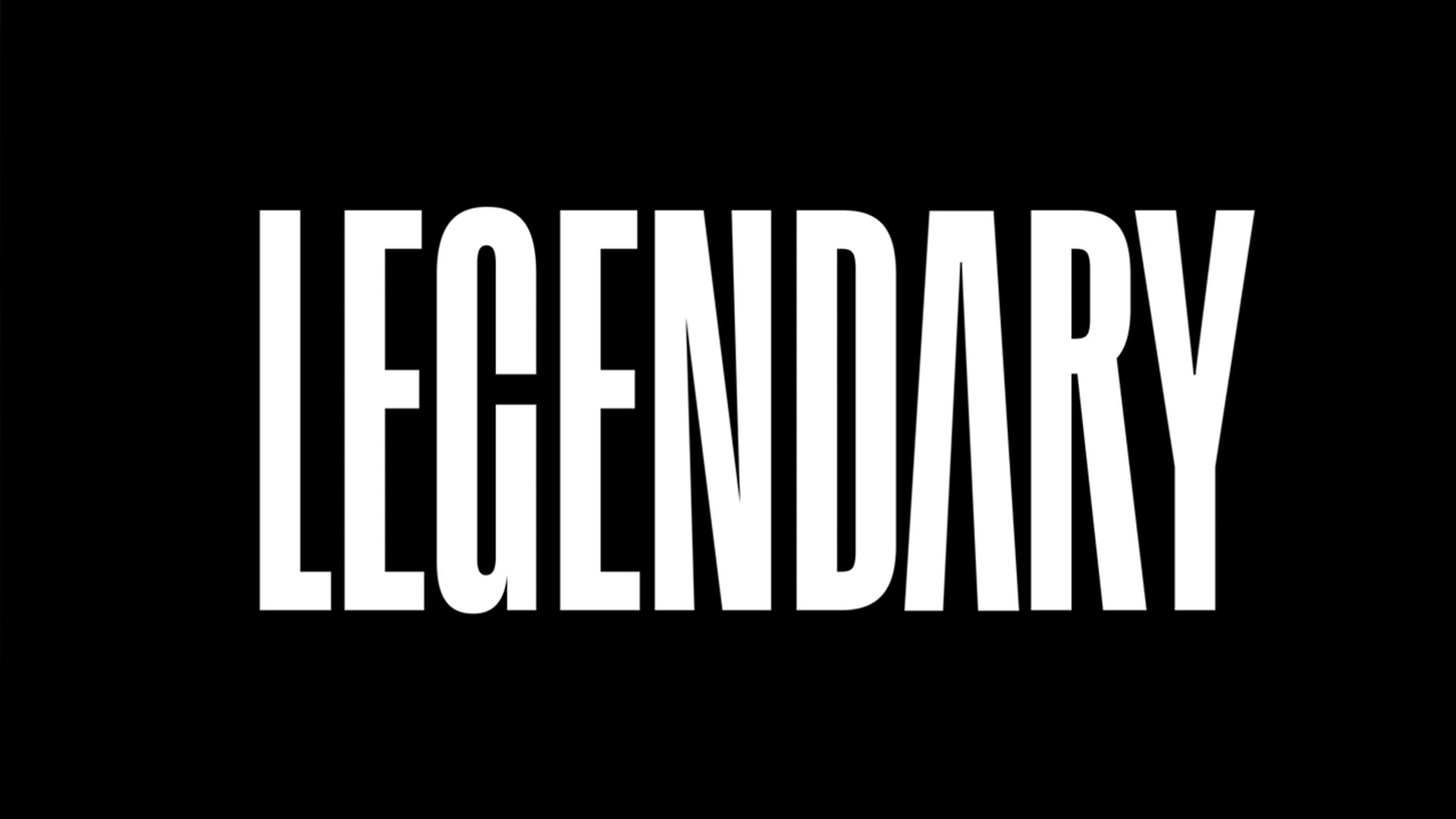
Styled by Matias Nunez.
Hair and makeup by Ivan Barria.
To read more, grab your own copy of Out's Pride issue featuring Atlanta-based musician Damez as the cover on Kindle, Nook, Apple News+ and Zinio today, and on newsstands June 30. Preview more of the issue here. Get a year's subscription here. The issue was guest edited by photographer Alex D. Rogers.


